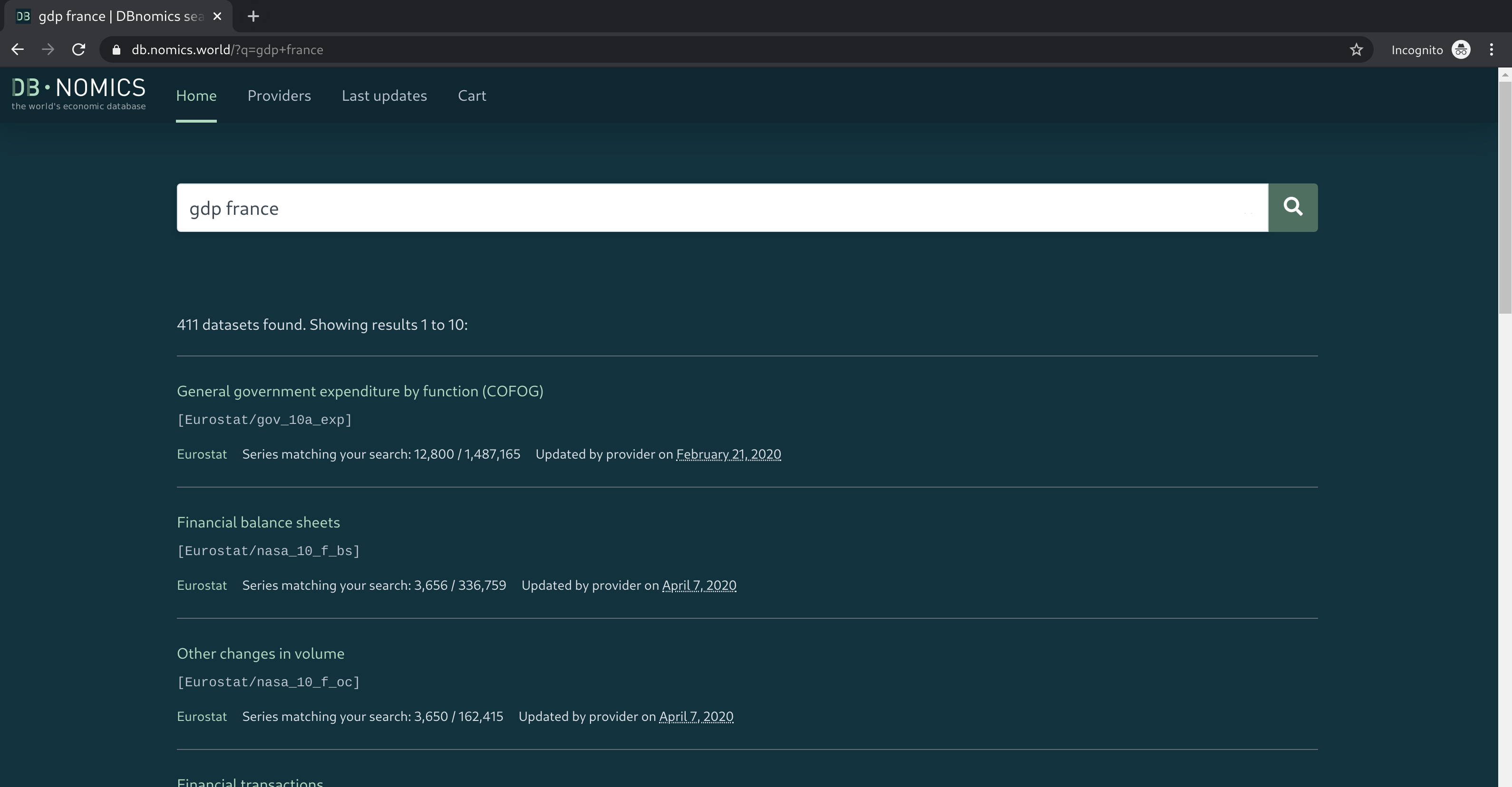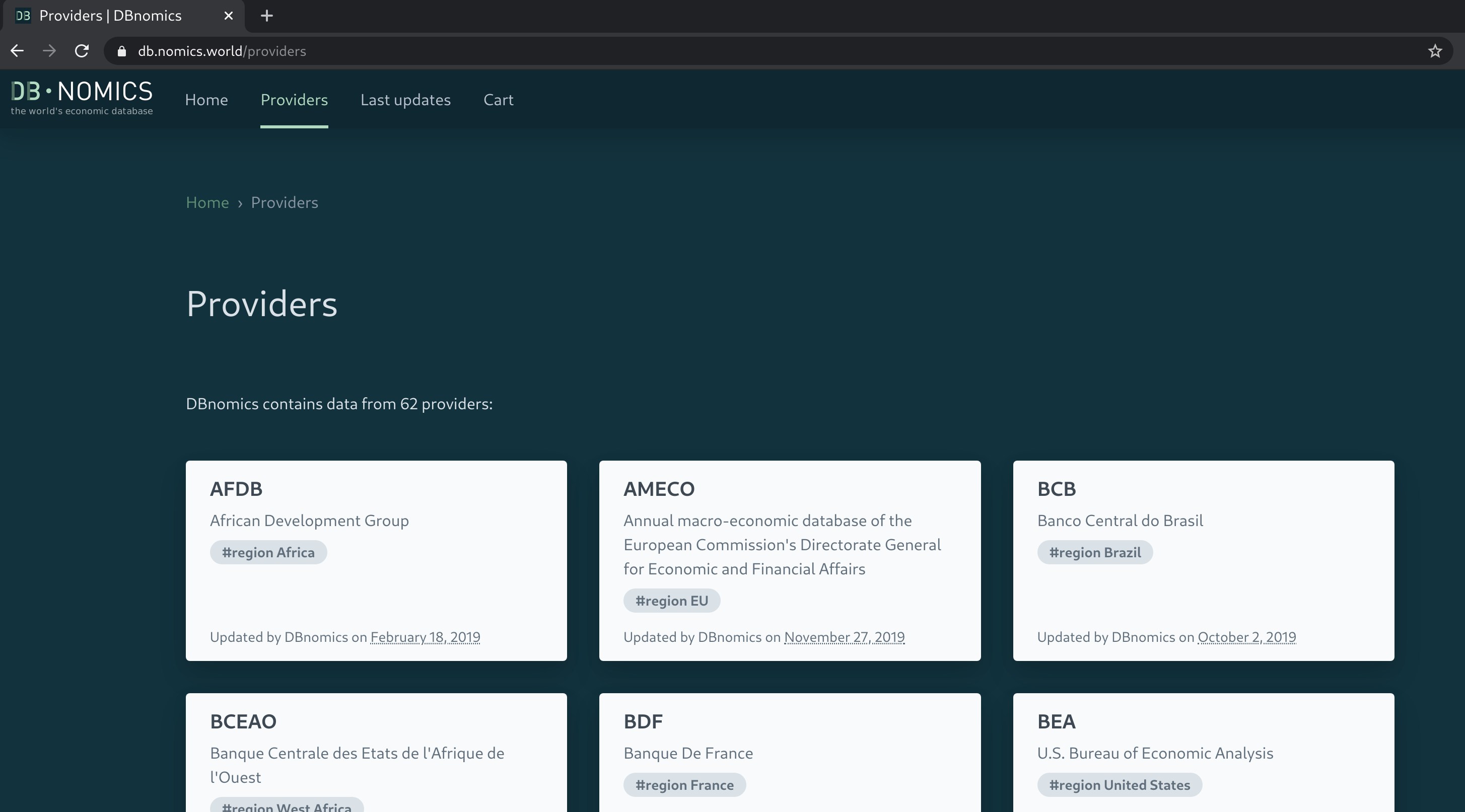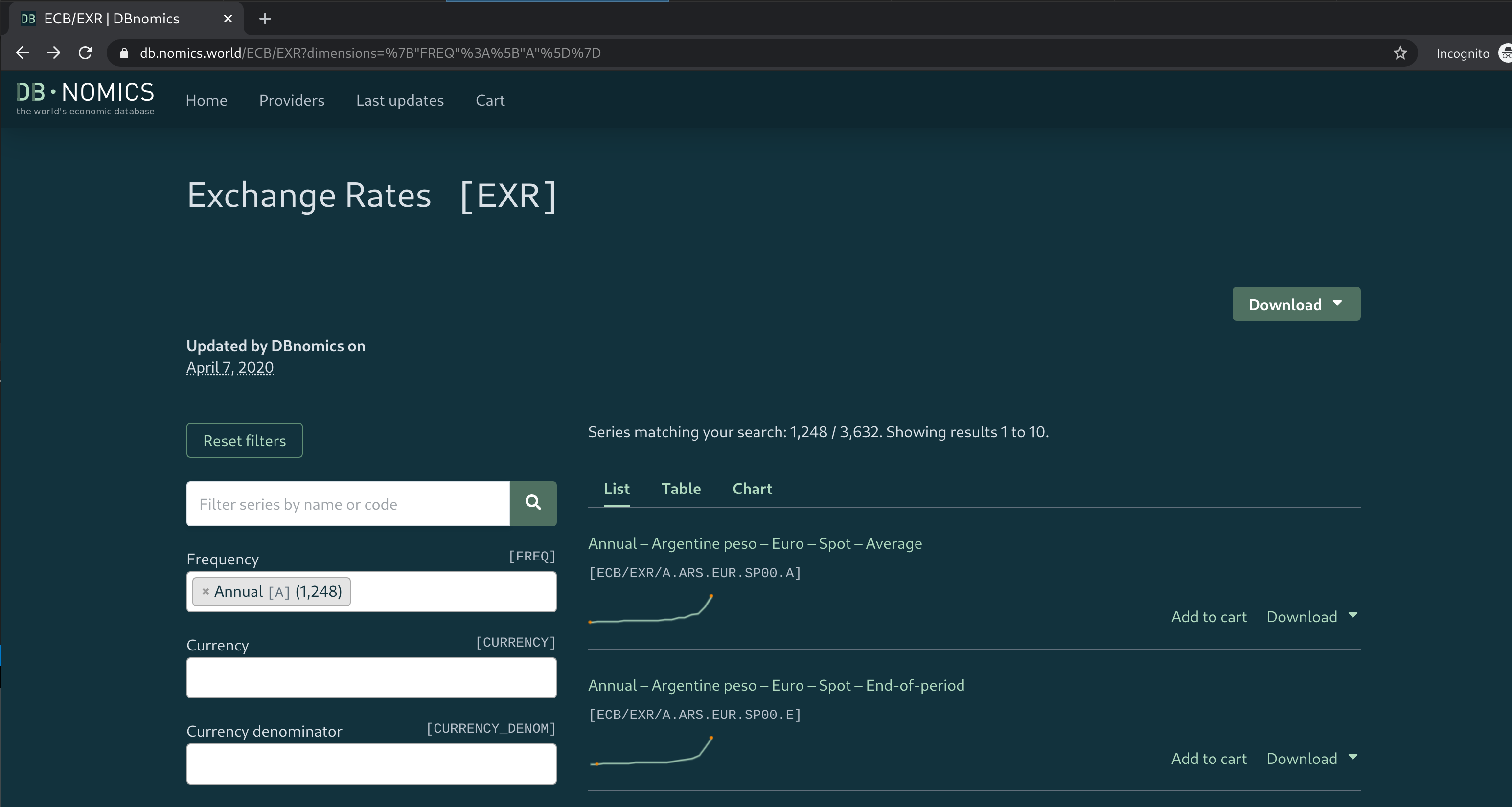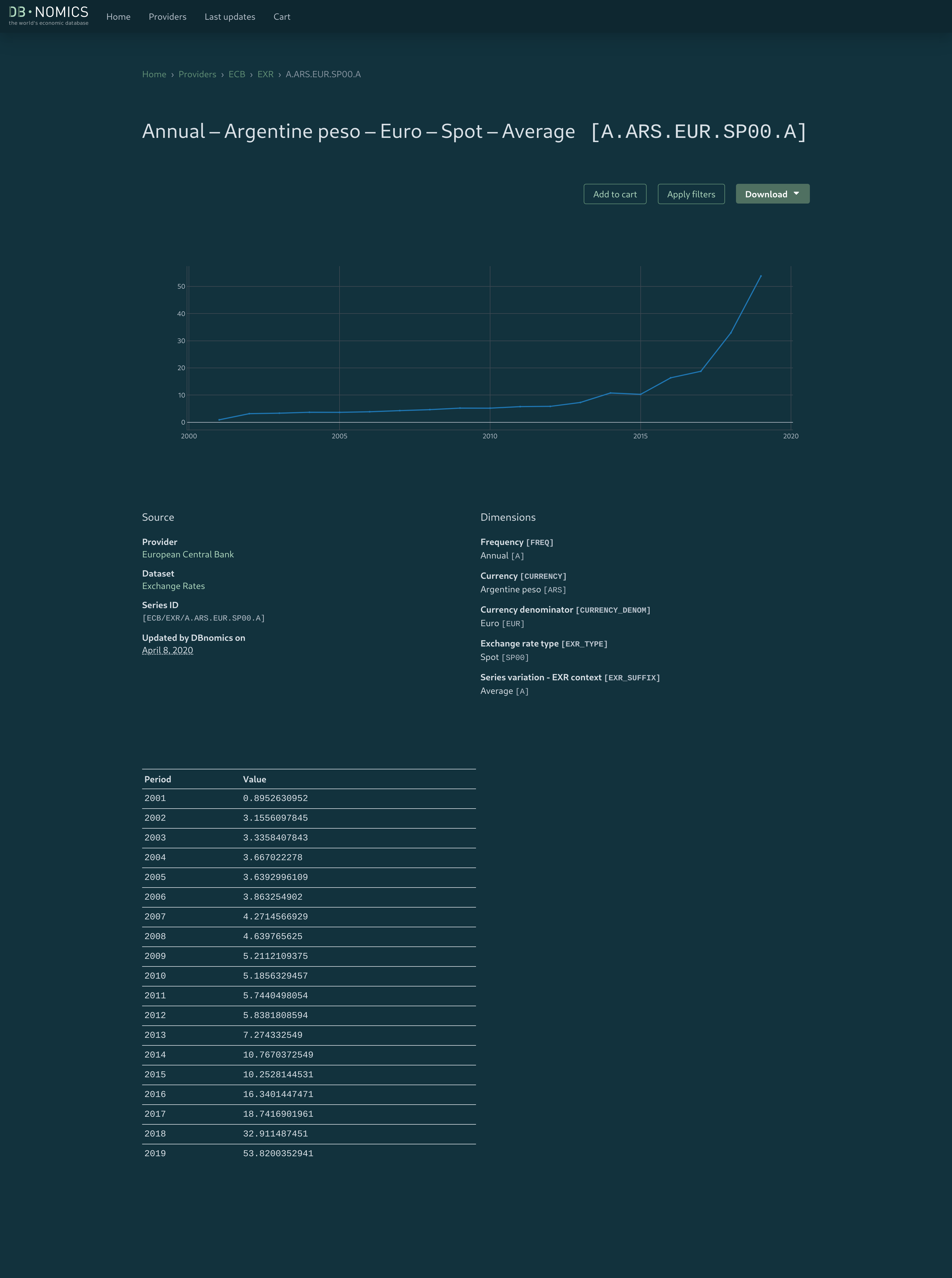Quick start
The purpose of the DBnomics project is to provide a unique website accessible for all users, allowing them to free download public economic data as released by national producers (national institutes of statistics, central banks) as well as international ones (IMF, World Bank, OECD, Eurostat, ECB…).
DBnomics goals:
- aggregate data from many providers
- organized in multi-dimensional datasets of time series
- harmonize metadata
- convert data formats (e.g. period)
- keep category tree from provider
- orchestrate jobs to download and convert data
- allow users to query data by full-text search and by dimension
- archive each revision of data
DBnomics non-goals:
- modify providers data: DBnomics does not interpret or harmonize observations of a time series
- create advanced data visualizations: there are lots of better tools outside
- provide an environment to work with data: instead, let's ease accessing data from programs and notebooks
Data can be accessed from the website, several applications or programming languages.
DBnomics website
DBnomics website allows users to search and browse data.
Full-text search
The home page of DBnomics allows to search for datasets in the whole database. The search is not restricted to a specific provider.
Here are the search results for gdp france:
List of providers
DBnomics aggregates many data providers, the full list is available here.
Provider page
The datasets of a specific provider can be found on a provider page (e.g. OECD).
Those datasets are often organized by the provider in a category tree, and DBnomics keeps it.
Dataset page
Datasets contains time series, each having dimensions, and the dataset page allows the user to dig into them using faceted search.
Faceted search is a search pattern commonly used on e-commerce websites to find products by criteria like size, weight, color, etc.
On the dataset page it is also possible to do a full-text search, restricted to time series belonging to the current dataset, as opposed to the search of the home page which targets the whole database.
Here is the dataset EXR from ECB, with the dimension "Frequency" fixed to the value "Annual". We see that the dataset has a total of 3,632 time series, and 1,248 match the search criteria:
Time series page
Each time series has its own URL, allowing to display it as a chart or a table, and easing referencing.
Here is the page of the time series ECB/EXR/A.ARS.EUR.SP00.A:




